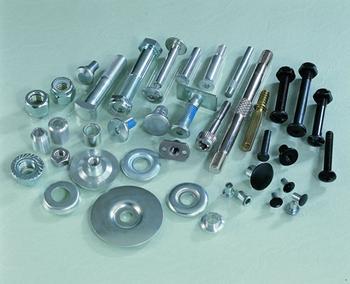How hardware fasteners respond to market changes
Round Lampshade,Outdoor Pillar Lamp Globe Cover,Plastic Ball Lampshade,Acrylic Spherical Lamppost Changzhou Jingui Lighting Technology Co., Ltd , https://www.czjglighting.com In the vast manufacturing industry, fluctuations in raw material prices have a direct impact on the downstream fastener sector. While there is no single solution to these challenges, the future of the fastener industry lies in addressing key issues: how to transition from low-end production capacity, how to manage procurement timing for cost-effective production, and how to reduce overall costs while conserving resources. These are critical questions that every company must confront.
As raw material prices continue to rise, businesses that remain passive risk being left behind. To survive and grow, companies must take initiative—exploring new paths and strengthening internal capabilities to adapt to changing market conditions. Two primary strategies for cost reduction include minimizing the use of expensive alloying elements or substituting them with more affordable alternatives, and optimizing the manufacturing process itself. For example, using non-tempered steel can reduce heat treatment steps in bolt production, while free-cutting steels improve nut machining efficiency. The adoption of advanced technologies in China's automotive industry has also driven the application of new materials like cold heading steel. Some high-strength fasteners now follow foreign material standards, signaling a growing emphasis on resource conservation. In the next 3–5 years, the development of specialized bolt steels is expected to become a key focus, reflecting a broader trend among fastener companies striving to move beyond low-end manufacturing.
Looking ahead, major national projects such as high-speed rail, aerospace, highways, and airports present significant opportunities for high-end fastener manufacturers. Boeing plans to add 3,400 aircraft over the next 20 years, while the National Development and Reform Commission is investing 800 billion yuan in rail transit projects across six cities. With 36 cities planning urban rail transit projects, the total operating mileage is expected to reach 6,560 kilometers by 2020, driving a demand for high-strength fasteners worth 5.7 billion yuan. This surge in demand offers a chance for the industry to break away from its "low-end" image and move toward higher-value products.
The most common topics among hardware fastener companies today are "transition" and "upgrade." However, many Chinese fastener firms face a difficult reality: rising raw material costs, increasing labor expenses, and pressure to raise product prices. But this increase must be supported by technological advancement and brand strength—a continuous and challenging process. For small and medium-sized enterprises, this is a major bottleneck, making survival increasingly tough.
Historically, the fastener industry has seen saturation during periods of market growth. China produces a quarter of the world’s fasteners, but most are low-grade and low-strength. Standard parts below grade 8.8 account for about 45%–50% of the market. In an environment of high raw material prices, the overcapacity of low-end products has become a major obstacle to industry development. Excess inventory strains working capital, forcing companies to seek new ways to convert costs into profits. Investing in technology and improving production efficiency are essential for opening up new markets and achieving long-term sustainability.
In the vast manufacturing industry, fluctuations in raw material prices have a direct impact on the downstream fastener sector. While there is no single solution to these challenges, the future of the fastener industry lies in addressing key issues: how to transition from low-end production capacity, how to manage procurement timing for cost-effective production, and how to reduce overall costs while conserving resources. These are critical questions that every company must confront.
As raw material prices continue to rise, businesses that remain passive risk being left behind. To survive and grow, companies must take initiative—exploring new paths and strengthening internal capabilities to adapt to changing market conditions. Two primary strategies for cost reduction include minimizing the use of expensive alloying elements or substituting them with more affordable alternatives, and optimizing the manufacturing process itself. For example, using non-tempered steel can reduce heat treatment steps in bolt production, while free-cutting steels improve nut machining efficiency. The adoption of advanced technologies in China's automotive industry has also driven the application of new materials like cold heading steel. Some high-strength fasteners now follow foreign material standards, signaling a growing emphasis on resource conservation. In the next 3–5 years, the development of specialized bolt steels is expected to become a key focus, reflecting a broader trend among fastener companies striving to move beyond low-end manufacturing.
Looking ahead, major national projects such as high-speed rail, aerospace, highways, and airports present significant opportunities for high-end fastener manufacturers. Boeing plans to add 3,400 aircraft over the next 20 years, while the National Development and Reform Commission is investing 800 billion yuan in rail transit projects across six cities. With 36 cities planning urban rail transit projects, the total operating mileage is expected to reach 6,560 kilometers by 2020, driving a demand for high-strength fasteners worth 5.7 billion yuan. This surge in demand offers a chance for the industry to break away from its "low-end" image and move toward higher-value products.
The most common topics among hardware fastener companies today are "transition" and "upgrade." However, many Chinese fastener firms face a difficult reality: rising raw material costs, increasing labor expenses, and pressure to raise product prices. But this increase must be supported by technological advancement and brand strength—a continuous and challenging process. For small and medium-sized enterprises, this is a major bottleneck, making survival increasingly tough.
Historically, the fastener industry has seen saturation during periods of market growth. China produces a quarter of the world’s fasteners, but most are low-grade and low-strength. Standard parts below grade 8.8 account for about 45%–50% of the market. In an environment of high raw material prices, the overcapacity of low-end products has become a major obstacle to industry development. Excess inventory strains working capital, forcing companies to seek new ways to convert costs into profits. Investing in technology and improving production efficiency are essential for opening up new markets and achieving long-term sustainability.